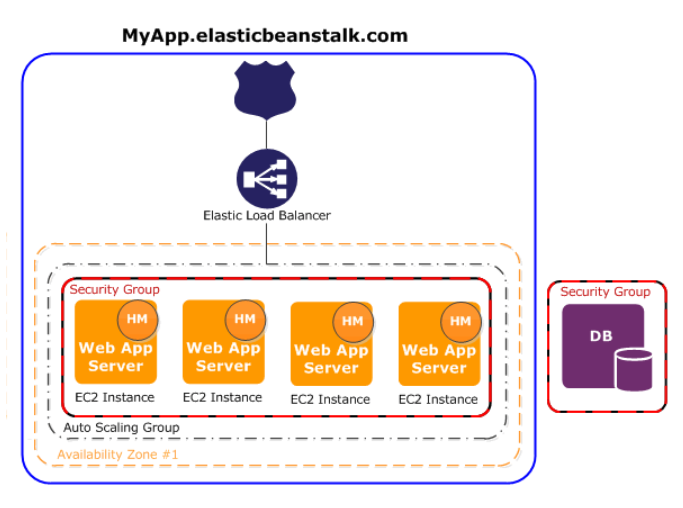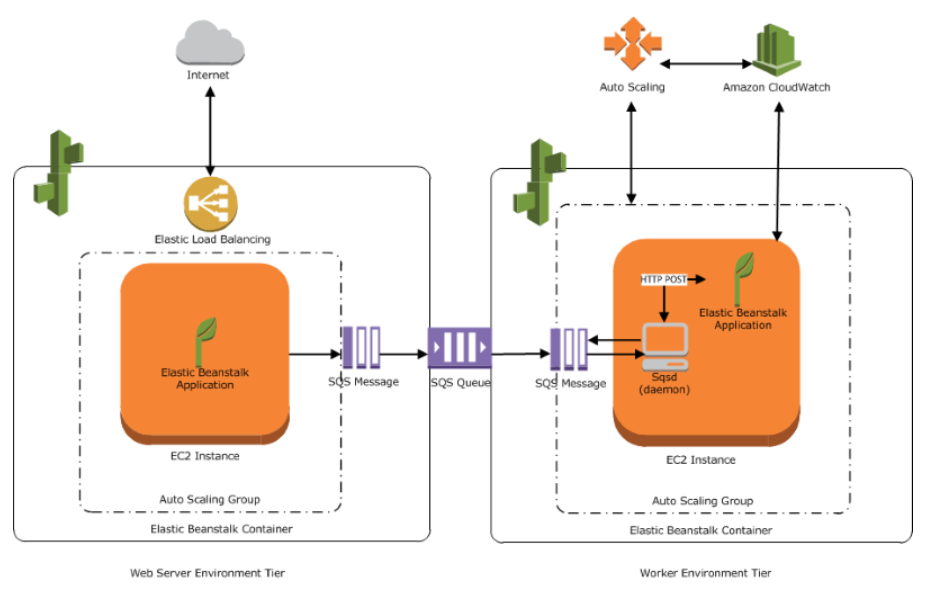Amazon Web Services (AWS): Elastic Beanstalk: Points to remember
Let's learn about Amazon Elastic Beanstalk:
-
Elastic Beanstalk makes it easier for developers to quickly deploy and manage applications in the AWS Cloud.
-
Elastic Beanstalk supports Java, .NET, PHP, Node.js, Python, Ruby, Go and Docker web applications.
-
Elastic Beanstalk is designed so that it can be extended to support multiple development stacks and programming languages in the future.
-
Elastic Beanstalk automates the details of capacity provisioning, load balancing, auto scaling & application deployment, creating an environment that runs a version of application.
-
Elastic Beanstalk uses proven AWS features and services, such as EC2, RDS, ELB, Auto Scaling, S3 & SNS to create an environment that runs application.
-
Elastic Beanstalk runs on the Amazon Linux AMI and the Windows Server 2012 R2 AMI.
-
Elastic Beanstalk stores application files & optionally, server log files in S3.
-
Elastic Beanstalk can automatically provision an Amazon RDS DB instance.
-
By default, users application is available publicly at myapp.elasticbeanstalk.com for anyone to access.
-
IAM users with the appropriate permissions can now interact with AWS Elastic Beanstalk.

-
Users can allow or deny permissions to specific AWS Elastic Beanstalk resources, such as applications, application versions & environments.
-
An IAM user can use their access key and secret key to perform operations using the Elastic Beanstalk API.
-
Elastic Beanstalk can automatically perform platform updates for new patch and minor platform versions.
-
Elastic Beanstalk will not automatically perform major platform version updates (Like Java 7 Tomcat 7 to Java 8 Tomcat 8) because they include backwards incompatible changes and require additional testing.
-
There is no additional charge for AWS Elastic Beanstalk– user pay only for the AWS resources actually used to store and run their application.
-
Elastic Beanstalk provides a unified user interface to monitor and manage the health of applications.
-
Elastic Beanstalk collects 40+ key metrics and attributes to determine the health of application.
-
Elastic Beanstalk is integrated with Amazon CloudWatch and AWS X-Ray.
-
Elastic Beanstalk meets the criteria for ISO, PCI, SOC 1, SOC 2 & SOC 3 compliance along with the criteria for HIPAA eligibility.
-
AWS resources launched by Elastic Beanstalk are fully accessible.

-
An Elastic Beanstalk application is a logical collection of Elastic Beanstalk components, including environments, versions & environment configurations.
-
An environment tier whose web application processes web requests is known as a web server tier.
-
An environment tier whose web application runs background jobs is known as a worker tier.
-
CloudFront can be used to distribute the content in S3, after an Elastic Beanstalk is created and deployed.
-
Elastic Beanstalk creates an S3 bucket named elasticbeanstalk-region-account-id for each region in which environments is created.
A Points to remember series by Piyush Jalan.